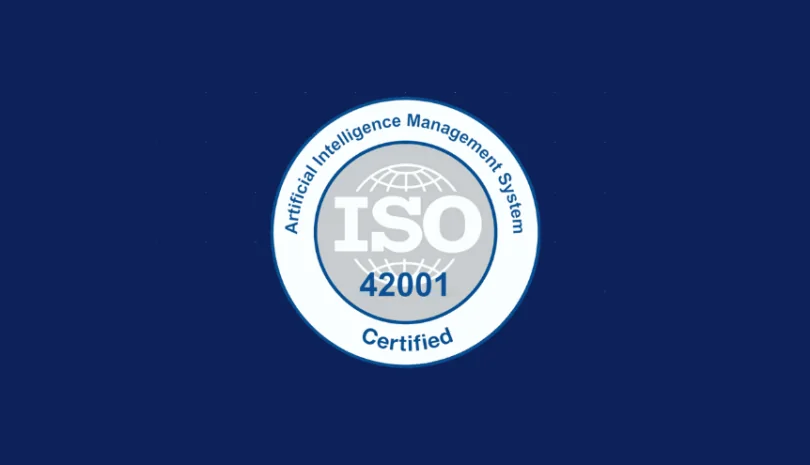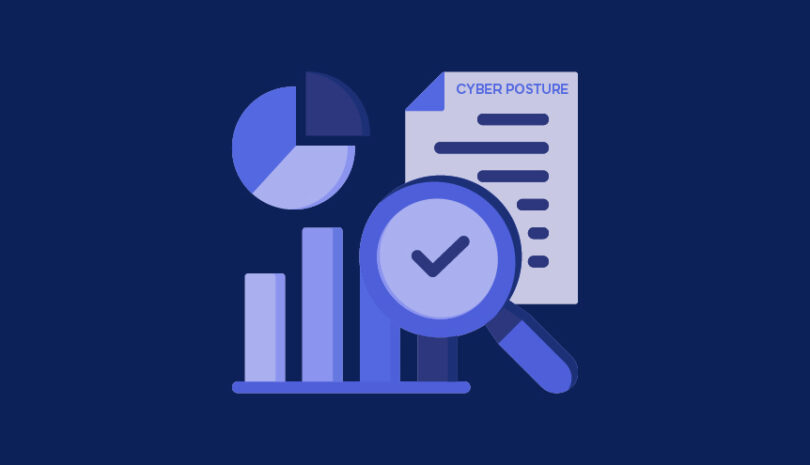Organizations that implement structured IT Asset Management (ITAM) practices can significantly reduce costs and improve operational efficiency. In fact, a 2024 article by ITAM Coaches, citing Gartner research, notes that companies adopting comprehensive ITAM programs can cut IT costs by as much as 30% within the first year. These savings often continue to grow over time as visibility improves and redundancies are eliminated.
As companies adopt more cloud-based tools and outsource key services, the IT landscape is becoming increasingly decentralized. This makes it harder to track what assets are in use, who is responsible for them, and whether they comply with internal policies or external regulations.
ITAM helps organizations take control by managing the full lifecycle of IT assets, from acquisition to retirement. But traditional ITAM strategies often focus only on internal infrastructure. Today, many critical assets are managed by third-party vendors, introducing additional risks and complicating oversight.
This article explores what ITAM involves, why vendor risk is an essential part of the equation, and which best practices can help organizations manage both their assets and their external partnerships more effectively.
What Is IT Asset Management?
IT Asset Management (ITAM) is the discipline of tracking, managing, and optimizing IT assets throughout their entire lifecycle. This includes every phase from acquisition and deployment to ongoing maintenance, renewal, and eventual disposal. These assets span a wide range of technologies, such as physical hardware, licensed software, cloud infrastructure, and digital services delivered by third-party vendors.
A strong ITAM strategy enables organizations to reduce waste, control IT spending, meet regulatory requirements, and improve overall security. Achieving these outcomes depends on having an accurate, up-to-date inventory. This includes knowing what assets exist, where they are located, how they are used, and who is responsible for managing them.
However, many IT environments today extend beyond internal networks. With the rise of cloud adoption and outsourced IT services, a significant portion of critical assets are now owned or operated by external vendors. This shift introduces new complexities, as companies often have limited visibility into these environments.
Lack of oversight can result in service disruptions, compliance failures, and security vulnerabilities. As a result, managing third-party relationships is no longer a separate task—it is an essential component of any effective ITAM program.
Why Third-Party Risk Management Matters in ITAM
Third-party vendors now play a central role in how organizations operate. Cloud-hosted platforms, outsourced IT support, and managed services are used across nearly every department, making external partnerships an integral part of the IT ecosystem. While these relationships can offer scalability and efficiency, they also introduce new risks that organizations must address.
When vendors are responsible for managing infrastructure or handling sensitive data, their security practices directly impact your organization. Misconfigured cloud environments, unpatched vulnerabilities, and delayed breach notifications are all common issues that can lead to significant consequences. A study by the Ponemon Institute found that more than half of all organizations have experienced a data breach caused by a third party, underscoring the importance of vendor oversight.
Regulatory frameworks such as GDPR, HIPAA, and the NIS2 Directive continue to raise the bar for accountability. These regulations increasingly require organizations to demonstrate that their vendors meet specific data protection and cybersecurity standards.
IT asset management must reflect this reality. It is no longer sufficient to focus on internal systems alone. Organizations need full visibility into third-party-managed assets, data flows, and operational dependencies to reduce risk and ensure compliance.
They can do so with tech platform that enable automating third-party security assessments and continuously monitoring vendor risk, Panorays helps organizations gain the visibility they need to manage external dependencies as part of a broader IT asset management program.
Best Practices for IT Asset Management Success with Third-Party Risk Management
A strong IT asset management (ITAM) program goes beyond maintaining an inventory. It ensures that each asset supports business goals, complies with relevant regulations, and meets security standards. As third-party vendors become more deeply integrated into IT operations, the need for alignment becomes even more important. Vendor-managed systems must be held to the same expectations as internal assets. This includes visibility, accountability, and risk oversight. The practices outlined below provide a clear framework for integrating third-party risk management into your ITAM strategy and building a more secure, efficient, and compliant technology environment.
Create a Comprehensive IT Asset Inventory
A clear, complete inventory is the foundation of effective IT asset management. Start by cataloging all IT assets, including hardware, software, cloud services, and vendor-managed systems. This inventory should do more than just list device names or software versions. It must include contextual details such as vendor ownership, license agreements, contract start and end dates, and associated service-level agreements (SLAs). These details offer crucial insight into operational responsibilities, renewal timelines, and legal obligations. Without this information, organizations risk losing track of critical assets or underestimating their exposure. Assets managed by external vendors should be included in the same system as internal resources to ensure consistency and visibility. Centralizing this data not only supports better decision-making but also improves compliance, audit readiness, and security oversight across your entire IT ecosystem.
Conduct Regular Vendor Assessments
Vendor assessments are essential for maintaining oversight and reducing third-party risk. While some vendors present minimal exposure, others may handle sensitive data or manage mission-critical infrastructure. Periodic assessments allow organizations to validate that vendors maintain appropriate controls and comply with required standards. These assessments should include formal due diligence, such as security questionnaires, requests for audit reports, and verification of certifications like SOC 2 or ISO 27001.
By reviewing vendor policies, incident response procedures, and data protection practices, organizations can better evaluate whether a vendor aligns with internal risk tolerance. Assessments should be revisited regularly and updated based on changes in the vendor’s role, the sensitivity of the assets they manage, or evolving regulatory requirements. A structured assessment process creates accountability and strengthens trust throughout the vendor relationship.
Implement Risk Assessment Protocols
After mapping your assets and identifying the vendors associated with them, the next step is to evaluate which of those assets pose the greatest risk to your operations. Risk assessment protocols help prioritize security and compliance efforts based on impact. Consider questions like: What would happen if this vendor experienced a breach? Would the asset’s failure result in downtime, data loss, or regulatory violations? Assessing risks in terms of both likelihood and business impact allows you to identify which third-party relationships require deeper scrutiny and more frequent oversight.
Critical systems, high-sensitivity data, and externally exposed assets often warrant more attention. Once you have this context, you can build tiered monitoring strategies, assign appropriate resources, and adjust policies based on risk exposure. This approach helps organizations maintain resilience and allocate security investments more effectively.
Establish Strong Contracts with Third Parties
Contracts are more than administrative formalities—they are critical tools for defining security obligations, setting expectations, and managing risk. Every third-party agreement should clearly articulate requirements for data protection, breach notification timelines, and compliance with relevant regulations. Security provisions should address access controls, encryption standards, and responsibilities during incident response. Contracts must also include audit rights, so organizations can verify that vendors are following through on their commitments.
Involving legal, IT, and risk management teams in contract development ensures that these documents support your broader asset and security strategy. If vendor roles or services evolve, contracts should be reviewed and updated accordingly. Well-structured agreements provide leverage in the event of a dispute and create a framework for accountability that extends beyond the procurement stage.
Automate IT Asset Tracking
As organizations grow and adopt more cloud-based services, manual tracking quickly becomes inefficient and unreliable. Automation solves this by providing real-time visibility into asset status, usage, and changes. ITAM tools can automatically discover and tag assets across the network, including those deployed or managed by third-party vendors.
These platforms allow teams to monitor asset performance, detect policy violations, and receive alerts for events such as license expirations, configuration changes, or contract renewal dates. Automation also helps eliminate blind spots caused by shadow IT or unauthorized software installations. By integrating asset tracking with other IT and security systems, organizations can streamline workflows and ensure that their records remain accurate and up to date. This kind of proactive tracking improves compliance and supports faster, more informed decision-making across departments.
Align ITAM with Cybersecurity
IT asset management and cybersecurity cannot operate in silos. Every asset, whether internal or vendor-managed, must be evaluated through a security lens. ITAM programs should be closely aligned with cybersecurity practices such as vulnerability scanning, patch management, and access control. Security teams must have visibility into which assets exist, how they are configured, and who has access. This includes third-party systems that connect to your infrastructure or process sensitive data on your behalf.
By integrating asset data into threat detection tools and incident response workflows, organizations can respond more effectively to potential breaches. Collaboration between ITAM and security teams ensures that policies are applied consistently and that risks are addressed early. This alignment not only improves operational efficiency but also strengthens your overall security posture.
Prepare for Incident Management
Despite the best controls, incidents involving vendor-managed assets can and do occur. What determines the impact is how prepared your organization is to respond. An effective incident response plan should account for third-party involvement and clearly define how vendor-related breaches will be handled. This includes roles and responsibilities, communication protocols, escalation paths, and timelines for notification. Vendors should be contractually required to report incidents promptly and participate in response efforts.
Tabletop exercises that include external partners can help clarify expectations and expose any weaknesses in coordination. In the aftermath of an incident, it is important to review what went wrong, assess vendor performance, and revise controls as needed. Preparation ensures that your organization can act quickly, minimize damage, and maintain trust with stakeholders when the unexpected occurs.
Tools to Support ITAM and Third-Party Risk Management
Technology plays a critical role in making IT asset management (ITAM) efficient and scalable. Platforms like Lansweeper, ServiceNow, and other ITAM solutions help automate the discovery, classification, and tracking of assets throughout their lifecycle. These tools assign ownership, monitor usage, and generate alerts for renewals or policy violations, enabling better control over both internal and vendor-managed resources.
For third-party risk, dedicated platforms, such as Panorays, can evaluate vendor security posture, automate due diligence, and monitor changes in risk levels over time. These tools support continuous oversight and reduce the manual burden of assessments.
When integrated, ITAM and risk management platforms provide a unified, real-time view of your entire IT landscape. This holistic visibility is essential for enforcing internal policies, maintaining regulatory compliance, and ensuring quick, informed responses to potential issues across both owned and outsourced assets.
Challenges and How to Overcome Them
Implementing an effective IT asset management (ITAM) strategy comes with several challenges, especially as technology environments become more distributed and reliant on third parties. One of the most persistent issues is incomplete visibility. Assets acquired outside of formal procurement processes—such as unauthorized SaaS subscriptions, remote work devices, or vendor-managed tools—can slip through the cracks. This lack of visibility weakens inventory accuracy and increases the risk of non-compliance or security gaps. To address this, organizations should use automated discovery tools and foster collaboration between procurement, IT, and security teams to ensure all assets are tracked from the beginning.
Resource limitations are another common barrier. Many organizations lack the time or staffing to assess every vendor or asset in depth. A risk-based approach can help by focusing efforts on the most critical or high-risk relationships.
Finally, regulatory expectations are evolving quickly. Requirements around data privacy, cybersecurity, and vendor oversight continue to increase. Staying compliant means embedding checks into every phase of the vendor lifecycle, not just during audits. By integrating compliance into onboarding, contract reviews, and ongoing monitoring, organizations can stay ahead of regulatory changes and avoid costly penalties.
IT Asset Management Solutions
IT asset management (ITAM) has become much more than an operational task. It is now a strategic function that supports regulatory compliance, strengthens security, and enables better technology decisions across the business. As organizations increasingly rely on third-party vendors, the scope of ITAM must expand to reflect that reality. Managing only the assets an organization owns is no longer enough.
A complete ITAM strategy requires full visibility into both internal and external assets. This includes systems and services delivered by third parties, many of which handle sensitive data or power core operations. Without proper oversight, these vendor-managed assets can introduce risks that are difficult to detect until it is too late.
Integrating third-party risk management into ITAM allows organizations to apply consistent policies, enforce accountability, and monitor for changes that could impact performance or compliance. It creates a more resilient infrastructure and builds confidence in your ability to manage complex digital ecosystems.
Book a personalized demo today and see how Panorays can transform your third-party risk management into a streamlined, proactive process that fits seamlessly into your ITAM strategy.
IT Asset Management FAQs
-
IT assets span a wide range of technologies, including physical hardware like laptops, servers, and networking equipment, as well as software licenses, cloud-hosted applications, and subscription-based tools. Increasingly, organizations also rely on assets that are managed externally by third-party vendors, such as infrastructure-as-a-service platforms or outsourced IT systems. Whether owned internally or provided by a vendor, all of these assets require proper tracking and governance.
-
The asset lifecycle includes several critical phases: procurement, deployment, maintenance, retirement, and disposal. At each stage, there are important decisions related to budgeting, compliance, risk management, and sustainability. ITAM provides structure and visibility throughout this lifecycle, ensuring that assets are used efficiently, remain secure, and are retired in a compliant manner.
-
ITAM strengthens cybersecurity by providing a complete, accurate inventory of all technology assets. This visibility helps security teams quickly identify unauthorized or outdated systems, ensure consistent patching, and manage access to sensitive environments. When third-party assets are included, ITAM also helps reduce the risk of external vulnerabilities and compliance gaps.



